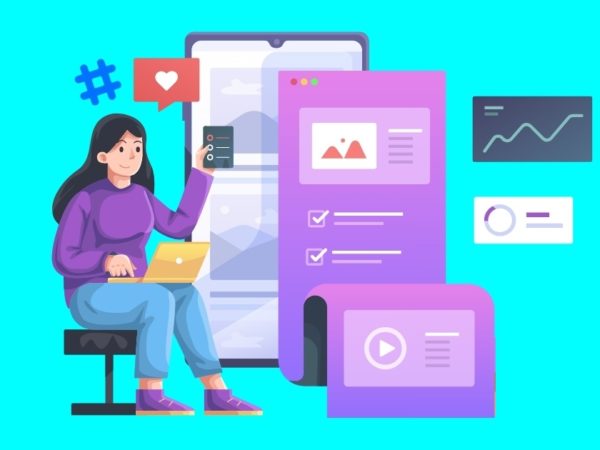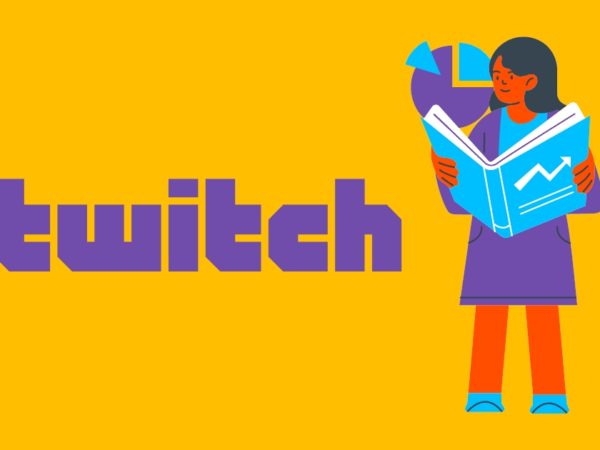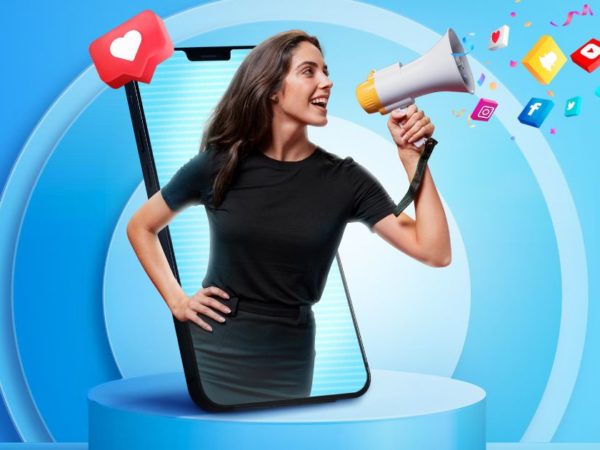Email marketing personalization can increase your brand reach and conversions, but you must do it correctly.
Emails are still one of the most effective marketing strategies, which is why numerous businesses aim to reach the target audience through their inbox.
However, it does not take a scientist to understand that a user will be more interested in opening a personalized email among hundreds of generic promotional emails.
Let’s deep dive into personalized email marketing as we discuss its importance, various techniques, best practices, and do’s and don’ts.
What Is Email Personalization?
Email marketing personalization refers to running personalized campaigns based on the data companies have on them. Personalization can be done on many levels — name, subject, location, email content, product suggestions, offers, and many more.
Now, personalized email campaigns have become a proven way to increase the chance of your email being opened by the recipient. Here are some interesting stats about email personalization:
- A personalized email has an opening rate of 18.8%, compared to 13.1% for generic emails.
- With a personalized subject line, marketers can increase the chance of opening emails by 26%.
- 75% of marketers claim that personalized emails get a better CTR for the company.
Hence, it can be said that personalization has a positive impact on email marketing campaigns through measurable and non-measurable metrics. The reason is also straightforward. Users find personalized emails to be more relevant to them.
While they tend to skip generic marketing emails, personally targeted emails persuade them better to open the email and take action.
Importance of Email Personalization
#1. Better Open and Conversion Rates
For any email marketing campaign, personalization is the key to its success. The reason is simple — when you send a personalized email, more people tend to open it and click on the CTA.
#2. Better User Experience
As companies can understand the user persona, they can implement that in their emails. Such emails are undoubtedly a joy to read for subscribers. These remove any irritation and bring positive emotions to their minds about the company.
#3. Improved Relationship
Personalization means having a humane touch in the email. People receive many marketing emails every day and are tired of reading bot-written messages. Personalized emails represent brand value, customers’ personal choices, and how they truly appreciate it.
#4. Getting a Competitive Edge
You are not the only one using emails for marketing. Using personalization can help you win over your competitors by a large margin. When someone sees your customized emails compared to the generic email sent by your competitors, they will be more interested in exploring your website.
#5. Utilization of Email’s Potentials
An email is a marketing tool full of opportunities. Sending general template-based emails will only use its potential to some extent. Companies can make the most of emails and get the desired results only with personalization.
#6. Follow Standard
In the present time, email personalization has become the standard. If you still skip it, you will lag behind the others.
Types of Email Personalization Techniques
#1. Adding Basic Contact Property in the Subject Line
The best way to grab immediate attention is to have a catchy subject line. A touch of personalization should do the job for you in a jiffy.
Using the prospect’s name and relevant info in the subject line will show that the email has been customized for them. According to MailChimp, keeping the subject line short and direct will determine the success of the email.
#2. Segmenting Based on User Journey
Every company wants results from its campaigns, and personalized email marketing is no different. Marketers can segment the users based on their position in the sales funnel and send them bespoke emails to move them to the next level.
If someone visits your product page and does not add anything to the cart, you can offer them a discount on those products. Or, if someone abandoned a cart at the shipping stage, you can offer them free shipping.
#3. Browsing History-Based Product Recommendations
Users checking gaming laptops on your website might need to buy gaming keyboards and mice. Thus, you can find out the products they might be planning to buy soon and suggest those in personalized emails.
#4. Personalized Discount Based on Browsing History
While sending cart recovery emails, this particular technique brings great success. Cookies help you gather your customers’ browsing data on your website and thus let you offer personalized discounts on these products.
Since people are already interested in buying these but did not for some reason, such discounts often bring them back to your site to purchase the products.
#5. Campaigns on Milestones
Personalized email marketing is important to nurture relationships with your audience. Sending them custom emails on different milestones shows that you care for them and often sparks engagement.
Wishing them on birthdays and offering a time-bound offer on that day is a nice gesture from any company. Customers value these and consider these to be a reason to stay loyal to the company.
#6. Behavioural Triggers
According to modern marketers, behavioral triggering is highly effective in email marketing campaigns. Despite sounding complicated, it is an automated email reaction instead of people’s interaction with your products. Besides welcome emails, these can help you with upselling and cross-selling.
#7. Personalization Based on Timezone and Geo Location
Customer location and time zones are two important factors marketers consider during personalized campaigns. Perform A/B testing to find out when someone wants to receive your emails. Moreover, sending emails to all subscribers from a country on national days is another great way of personalization.
#8. Cart Abandonment
Many customers add products to their cart but do not buy them. They need a little push to make them click the Buy button. In such cases, send them personalized emails, including product images and the final check-out price. Offering them a time-limited discount also helps in most cases.
Email Marketing Personalization: Best Practices
#1. Creating Customer Personas
As a marketer who runs personalized email campaigns, you must create customer personas for every type of customer. Analyze your target audience and understand the personas to use in your email marketing efforts.
While most brands target 1-3 personas, creating at least one is mandatory. Once you grasp what the personas want and how they behave, email marketing personalization becomes easier.
#2. Collecting the Right Data
While no email personalization can be successful without customer data, collecting too much data will confuse you. Therefore, starting with a small number of basic data points (age, location, gender) is a good idea.
Once you know how to utilize these to personalize your emails, you can move on to use psychographic data, such as customer behavior, browsing history, and social media interactions.
#3. Email List Segmentation
You can segment or categorize your email list based on personas or other criteria. But stay away from hyper-segmentation that will make you create hundreds of segments. The objective of segmentation is to create targeted offers easily. Hence, focus on broader categories such as location.
#4. Using Email Automation Software
Handling personalized email campaigns might seem hectic to most marketers. Instead, they can opt for email automation tools to send the right message to the right audience at the right time.
These tools also allow you to automate emails based on various parameters. You can even get notified each time someone opens emails through these tools.
#5. A/B Testing
In the case of personalized emails, testing makes you perfect. Testing email campaigns are highly important, even more for automated campaigns with personalization or email triggers.
Instead of testing the emails on computers, send them to yourself to check if everything is right. With growing smartphone users, make sure your emails are mobile-compatible.
#6. Personalizing Product Recommendations
Customers who get an email with personalized product suggestions know that you understand their choice. Companies can easily generate customized recommendations based on a customer’s purchase and browsing history.
Also, you can suggest relevant blogs on the purchased products. Thus, you will not force customers to buy all the time.
Do’s and Don’ts of personalized Email Marketing
Do’s
#1. Get Consent on Sharing Customer Data with Others
No customer would appreciate when they see a third party sending them emails containing data that they never consented to share.
Some people can even take legal action against your company for sharing their data with others. Therefore, be careful and get consent to use and share any data you collect with the personalized email.
#2. Send Emails at the Right Time
Timing plays a crucial role even in personalized email campaigns. Not every customer belongs to the same time zone. Hence, you need to deliver emails when they are ready to read them.
Make sure to know the best time for opening your campaign emails. You can collect data on when is the best time to get an email opened by someone and send emails at the appropriate time.
#3. Add Appropriate Links to a Page
Email marketing aims to direct the recipients in the right direction. Include a link to any webpage that goes with the story of your email. If the email talks about summer sales, the link it contains should go to the webpage or landing page of the summer sales.
#4. Include a CTA
Marketers need to measure the success of their email campaigns, and therefore, they need to include a CTA in every email. At that time, they need to have the desired action in mind. Including CTA through a button will offer you more conversions than a hyperlink.
#5. Use Dynamic Content
The touch of personalization should be everywhere in your email marketing campaign. Using the same email body for every user will not increase your conversion rate. Instead, you can use dynamic content in your emails and see a significant increase in your ROI.
Don’ts
#1. Bombarding Customers With Emails
Just because you send personalized emails to your subscribers, do not flood their inboxes with messages. Even the most loyal customer of your brand would hate to get spammed by your promotional emails. It is better to get feedback from the users on how many emails they want to receive every month.
#2. Don’t Collect Unnecessary Data
During email campaigns, businesses often end up collecting a lot of data. Keeping the data breaches in mind, you should not collect and store unnecessary data that you may have used later if needed. Moreover, you must be extra careful while collecting personally identifiable or sensitive information.
#3. Don’t Become Creepy
Over-personalization or too much personal information might turn your emails into something creepy. Trust us, no one would like to find that a business company knows everything about them. Hence, use the data without crossing the “creep” line, so they do not feel you are spying on them.
#4. Don’t Personalize Meaninglessly
Some of us forget the meaning of personalization and create emails containing generic personalization.
Marketers might find them to be personalized, but the subscribers would not. Avoid generic personalization (only adding the customer’s name in the email body while the rest contains a general message.) Instead, personalize specific areas and research how to attract recipients in those areas.
#5. Don’t Personalize Every Email
Marketers might feel the urge to personalize every email they shoot. However, this is not the ideal thing to do from a user’s perspective. Owning data on some aspect does not mean you need to insert it in the emails. You need to understand which emails to personalize to drive conversions.
Final Words
Email marketing personalization is not only about writing a customized email; the process goes back to list building, behavioral analysis, and segmentation.
As you can see from the above discussion, it is a time-taking process that needs your attention and effort. However, if you follow the techniques and best practices mentioned here, you will indeed become successful with your personalized campaigns.
When creating strategies, companies can use Pipedrive to create email marketing policies.



